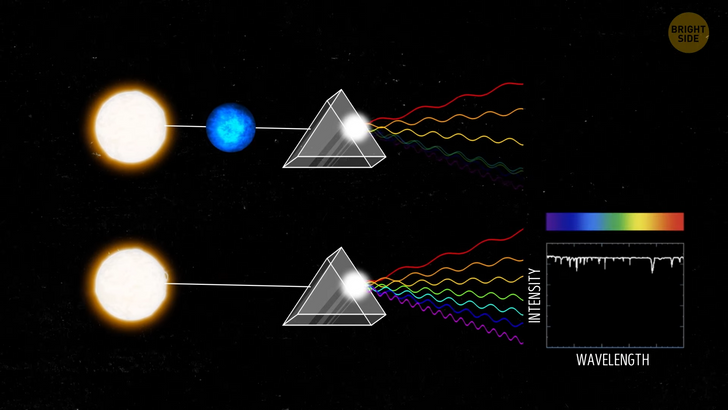Helen Hunt, 60, Stuns During Her Latest Appearance, and Her Lips Become the Center of Attention

Guess what? Scientists have come up with a cool idea about some cosmic creatures saying “hello” to us from the center of the Milky Way! Astronomers are all excited about finding extraterrestrial life, so they’re focusing their search right at the heart of our galaxy.
Imagine stars in outer space like super cool DJs spinning their own unique beats. But instead of music, they send out these special signals called “radio pulses.” It’s their way of saying “What’s up, universe?” These radio pulses are basically little bursts of energy that travel through space. They’re not just random noise, though. They have a specific pattern that makes them stand out from all the other sounds out there. It’s like a secret code or a special rhythm that only these stars know how to create.

Scientists are super curious about these radio pulses because they think that maybe, just maybe, intelligent beings from other planets could be using them too. It’s like a galactic language that they could use to talk to each other. So these clever scientists created special tools and software to listen in on these signals. It’s kind of like tuning into your favorite radio station, but instead of music or talk shows, they’re trying to catch these cosmic beats. They’re hoping to find those unique patterns that could be a sign of other space beings trying to communicate with us.
They used a super cool telescope called the Green Bank Telescope in West Virginia to collect data and searched for these signals. But here’s the twist: they didn’t find anything this time. No worries though, because their fancy software is lightning-fast, and it’ll help them search even better next time!
But why did they pick the center of the Milky Way for this ET life hunt? Well, that’s because the galaxies’ hearts are packed with stars. In other words, there should be many more planets in there, which means more potential places for life. Plus, if there are super-smart life forms at the core of our galaxy, they can easily send signals to lots of planets all at once. Sneaky, huh?

This whole thing is super exciting because it’s the first time scientists have gone all out to search for these types of signals. They think that using specific frequency ranges and repeating patterns is a really clever way for ET beings to make themselves known. I mean, that combo is so unlikely to happen naturally, right?
The best part is that they have this algorithm thingy that can go through a crazy amount of telescope data in just 30 minutes. So even though they didn’t find anything yet, they’re confident that this speedy method will help them find evidence of advanced life in the future. How awesome would that be?
As you know, humanity has been searching for buddies from outer space for a very long time. This research is just one of the many attempts to find them. There’s a whole institute dedicated to this mission in the US — SETI, or Search for Extraterrestrial Intelligence. So, naturally, the question arises... Why haven’t we found anyone yet? It’s like we’ve been scanning the sky forever, hoping to catch a glimpse of advanced civilizations out there. But we get absolutely nothing!

All this brings us to the famous Fermi paradox. It’s like a big mystery that fuels the hunt for extraterrestrial intelligence. We’d think that if intelligent life exists, we’d have evidence of it by now. Maybe they’re actually beaming out radio signals for us to pick up. Or maybe they’re just broadcasting in general, and we happen to stumble upon it. They could even have left cool artifacts in our solar system to keep an eye on us or just hang out. Heck, maybe they’re building wild mega-engineering projects, like gigantic solar panels around their stars. Or they could be getting all fancy and contaminating their stars with heavy metals just to announce their presence.
So the search continues. We’re not giving up just yet! And hey! Maybe instead of just focusing on smart space beings, we should be on the lookout for any kind of life at all. Yeah-yeah, I know that a tiny microbe might not be as thrilling as chatting with friendly otherworldly creatures... but think about it: there could be lots of simple life forms out there.
We’re talking about simple organisms swimming in oceans, mossy creatures holding onto rocks, or the first signs of critters exploring their habitats. They might not be super brainy, but they leave their mark. Plus, they could be way more common and easier to find in our galaxy!

Take Earth, for example. There’s a theory that our atmosphere used to have a lot of oxygen floating around. But oxygen is a bit wild and doesn’t stick around for too long. It either escapes into space or bonds with other elements, changing into different things like carbon dioxide. Then, around two billion years ago, single-celled organisms decided to gobble up carbon dioxide and burp out oxygen, completely changing Earth’s atmosphere. Life here transformed the very nature of our planet.
And guess what? We can actually detect changes like that on other planets! Here’s how: when we look at faraway planets called exoplanets, sometimes they cross in front of their parent stars. As the star’s light passes through the planet’s atmosphere, it gets all mixed up with different elements and molecules in the air. And you know what happens? The light changes its flavor and color in a special way.
Imagine if you had a glass of lemonade, and you added some fruit juice to it. The lemonade would taste different, right? Well, it’s kind of like that with exoplanet atmospheres. When we see the star’s light that has traveled through the planet’s atmosphere, it gives us clues about what’s in the air and how it’s different from just the star’s light alone.
So by studying these changes in light, we can figure out what kinds of elements and molecules are present in the atmosphere of a faraway planet. It’s like a cosmic chemistry experiment, and it helps us learn more about whether there might be life out there.

So, right now, we can only study the atmospheres of big planets that orbit really close to their stars. But don’t worry, NASA’s Transiting Exoplanet Survey Satellite is on the case! It’s finding lots of interesting planets that we can check out more closely with the super-powered James Webb Space Telescope. This amazing telescope can even sniff out if there’s too much carbon dioxide on other worlds. And okay, let’s be real. Our first contact probably won’t be as flashy as in the movies. No exchanging secret codes or figuring out ET customs. We won’t be chatting about funky bodies or habits either.
Instead, the first hint of life out there will most likely come as a little wiggly line on a graph. It’ll show us that living creatures have really shaken things up on their home planet. Even simple life forms can have a big impact on their environment and leave behind a noticeable trace.
Sure, it might not be as wild as battling space robots or epic adventures, but imagine this: finding any kind of life beyond Earth would be HUGE! We’d be calling home, sending messages like, “Guess what? We’re not alone in the universe!” It would be a historic moment worth celebrating. And by the way, we’ve already begun to find organic molecules in space! It’s not a full-fledged “life” as we imagine it, but it’s still pretty neat.

For example, we’ve already started to find organic compounds on Mars. And there’s a teeny-tiny chance that Mars once flourished with plants — and maybe even animals! This is just a possibility, but if it turns out to be true, it would show that the presence of living organisms in the universe is not as rare as it seems.
The search for life in the universe is like a great detective game. We thought that finding it would be easier because they could do cool stuff like blasting radio signals or transforming their whole solar system. But looks like, in reality, things are much more complicated. Nevertheless, we shouldn’t give up. Let’s keep searching and hope that this new study about radio signals brings some results.











